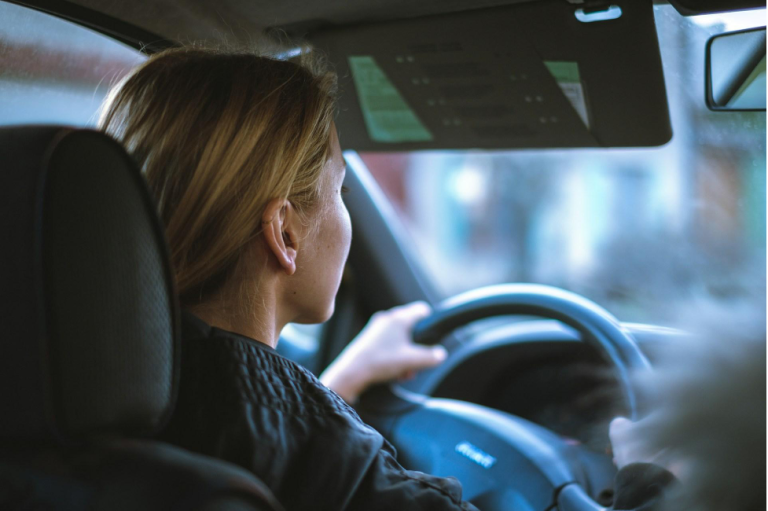The Invisible Barrier: Childhood Trauma’s Impact on Driving Performance
Driving is a complex and demanding skill that requires attention, coordination, and judgment. But for some people, driving can also trigger anxiety, flashbacks, or hypervigilance due to their history of childhood trauma.
“Childhood trauma, such as accidents, abuse, or neglect, can have lasting effects on the brain and the body, affecting one’s ability to cope with stress, regulate emotions, and process information. These effects can interfere with driving performance, putting oneself and others at risk,” highlighted professional driver and car detailing specialist Elise Johnston.
According to a 2018 study by the Australian Institute of Health and Welfare, one in six Australians experienced physical or sexual abuse before the age of 15.
Another study by the Australian Centre for Posttraumatic Mental Health found that 12% of Australian drivers reported having posttraumatic stress disorder (PTSD) symptoms related to a traumatic event, such as a car crash, a violent assault, or a natural disaster.
These statistics show that childhood trauma and its consequences are more common than we think and that they can affect anyone, regardless of age, gender, or background.
How does childhood trauma affect driving performance? Here are some of the ways:
Anxiety
Childhood trauma can cause chronic anxiety, which can impair one’s ability to focus, relax, and cope with uncertainty. Anxiety can also cause physical symptoms, such as sweating, trembling, or palpitations, which can distract or impair one’s driving. Anxiety can also make one more prone to panic attacks, which can cause loss of control, hyperventilation, or fainting while driving.
Flashbacks
Childhood trauma can cause intrusive memories, images, or sensations that reminders of the traumatic event, such as sounds, smells, or sights, can trigger. Flashbacks can cause one to lose touch with reality and to relive the trauma as if it were happening again. Flashbacks can also cause emotional distress, such as fear, anger, or guilt, affecting driving behaviour.
Hypervigilance
Childhood trauma can cause heightened alertness, sensitivity, and reactivity to potential threats, even when there are none. Hypervigilance can cause one to overestimate a situation’s danger and react impulsively, aggressively, or defensively. Hypervigilance can also cause difficulty trusting others and perceiving other drivers as hostile or malicious.
These are just some of the ways that childhood trauma can affect driving performance. There are many more to explore and understand, and they can vary from person to person, depending on the type, severity, and duration of the trauma, as well as the individual’s coping skills, personality, and support system.
How can one overcome the invisible barrier of childhood trauma and improve one’s driving performance? Here are some of the steps:
Recognise

The first step is to recognize the signs and symptoms of trauma-related driving challenges and to acknowledge their impact on one’s driving. One can also seek professional help, such as a doctor, a psychologist, or a driving instructor, to get a proper diagnosis and assessment of one’s driving abilities.
Seek support
The second step is to seek support and therapy to address the underlying causes and effects of the trauma and to heal the wounds of the past. One can also find a supportive and understanding driving instructor to help one learn and practice the skills and strategies needed to drive safely and confidently.
One of the therapy modalities that can help with trauma-related driving challenges is eye movement desensitisation and reprocessing (EMDR), which is a form of psychotherapy that uses eye movements, sounds, or taps to help process and resolve traumatic memories.
EMDR can help reduce the intensity and frequency of flashbacks, anxiety, and hypervigilance and improve one’s self-esteem and self-control. If you are interested in EMDR therapy, you can check out Lumah Wellness, which is a service provider that offers EMDR therapy and other forms of psychotherapy for trauma survivors.
Practice
The third step is to practice and improve one’s driving skills by gradually exposing oneself to different driving situations and applying the techniques and tips learned from the driving instructor and the therapist. Practice can help one build confidence, competence, and comfort behind the wheel and overcome the fear and avoidance of driving.
Beyond the Fear: Heal, Drive, Thrive – Conquer Your Roadblocks with Adelaide West Driver Training
Driving is a valuable and rewarding skill that can enhance independence, mobility, and opportunities. But for some people, driving can also be a source of stress, fear, and frustration due to their history of childhood trauma. By recognizing, seeking support, and practising, one can overcome the invisible barrier of childhood trauma and become a safe and responsible driver.
Adelaide West Driver Training is a friendly team of highly experienced driving instructors who can guide you to gain a full license. We know obtaining a driver’s license is a big step, and we are here to help. Let Adelaide West Driver Training help make you a safe and responsible driver.
Contact us today for your driving lessons and get a driving instructor who is second to none compared to other driving schools.







